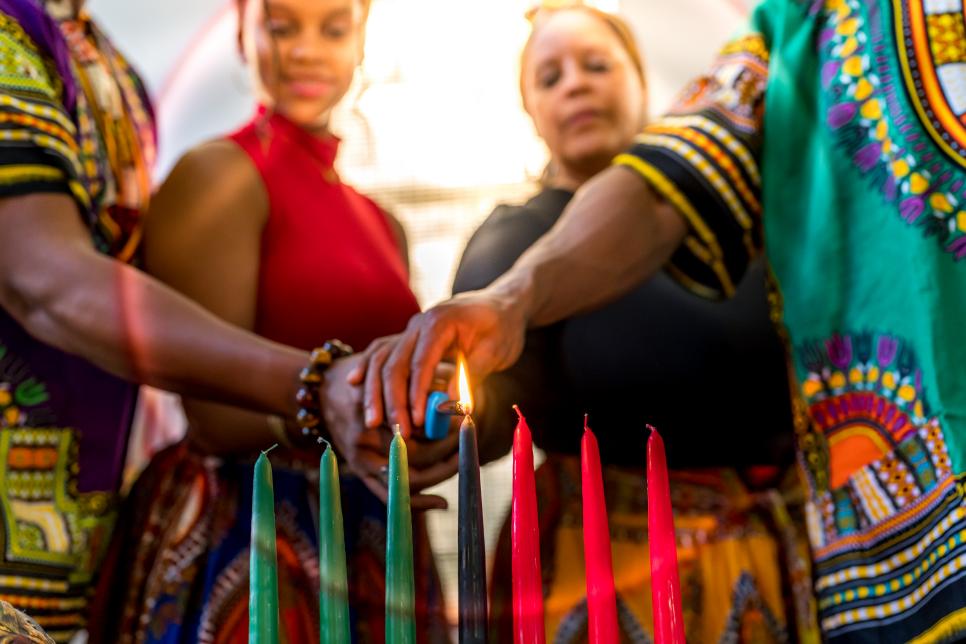What is Kwanzaa and How Is It Celebrated?
Learn about this community celebration through these commonly asked questions.

Related To:

Photo By: Lisa5201
Photo By: Hill Street Studios
Photo By: Burke/Triolo Productions
Photo By: Caelestiss
Photo By: Burke/Triolo Productions
Photo By: a_lis
Photo By: Hill Street Studios
Photo By: SeventyFour
Habari Gani?
Kwanzaa is a nonreligious, pan-African seven day celebration of Black history, culture, and unity, and was created in 1966 by Maulana Karenga. The first day of Kwanzaa is on December 26 and the last day is on January 1. If you’ve heard about it and are curious, here are seven common questions to jump start your research!
Is this a religious holiday?
Nope! Kwanzaa is a nonreligious celebration, and a time for reflection, hope, and building community. And yes, you can still celebrate Christmas (and other holidays)!
What does Kwanzaa mean?
Kwanzaa takes its name from the Swahili phrase, "matunda ya kwanza" which means "first fruits", and underscores the theme of prosperity. Many of the words spoken during Kwanzaa are Swahili. For example, the greeting used during this time is "habari gani?" which means, "what’s the news?" It is asked on each day of Kwanzaa and the response is the principle of the day.
What are the principles?
There are seven principles, one for each day, that each have a special meaning and symbol to represent it. The principles are unity (Umoja), self-determination (Kujichagulia), collective work and responsibility (Ujima), cooperative economics (Ujamaa), purpose (Nia), creativity (Kuumba), and faith (Imani). Part of the celebration is discussing how to implement these principles in your day to day life.
How do you decorate for Kwanzaa?
There are also seven important symbols that are used to set the Kwanzaa table: a tablecloth (mkeka), candleholder (kinara), candles (mishuma saba), produce (mazao), corn (muhindi), a unity cup (kikombe cha umoja), and gifts (zawadi).
Why are the candles red, black, and green?
The associated colors are red, black, and green. Red represents sacrifice and struggle, black represents heritage and history, and green represents hope and prosperity.
Do you get gifts?
Yes! Gifts are called zawadi. They are usually handmade and/or purchased from a Black-owned business, and it is encouraged to give books or other items of cultural and historical significance.
Who celebrates Kwanzaa?
Kwanzaa can be celebrated in a family's home, or as a community gathering. Some parts of the celebration are dancing, drumming, storytelling, and affirmational statements that are recited in unison. On the last day of Kwanzaa, some people enjoy a communal feast, called a karamu, and celebrate into the new year. Heri za Kwanzaa!
YOU MIGHT ALSO LIKE: Karen and Deon Derrico's Favorite Black-Owned Brands, 12 Children’s Books About Race, Tips and Tools to Help You Stick to Your Resolutions














